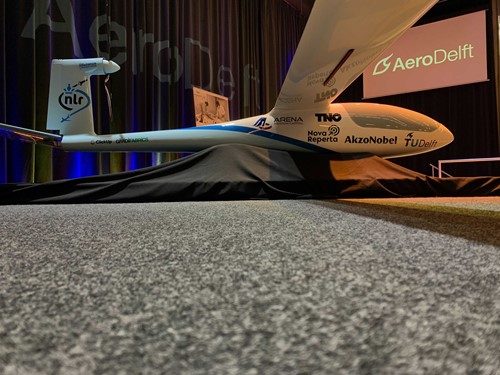News
AeroDelft team unveils plans for LH2 powered airplane

After two years of research and production, the student team AeroDelft has revealed the finished structure of their prototype airplane powered by liquid hydrogen, called ‘Phoenix PT’. The brand new aircraft was revealed Friday, February 26th, bringing the team one step closer to achieving sustainable aviation.
The airplane, showing much resemblance with a glider, is coated in the team’s blue and white colors, with the logos of sponsors across the body.
AeroDelft, a team consisting of 50 students with 17 different nationalities, wants to prove and promote liquid hydrogen as an alternative to conventional aviation fuels, to inspire the aviation industry to make the change on a scale that will result in worldwide sustainable aviation. This puts the team on the frontline of a ‘revolution’ in the industry, with several initiatives popping up around the world that support the same cause.
Challenges
During the presentation of the airplane, the key engineers provided some technical background into the production process. The team replaced the use of an expensive oven for the heat treatment of large composites with an improvised igloo from isolation material, coupled with heaters. Additionally, the team saved a lot of time and money by 3D-printing and sanding molds themselves to produce some of the smaller parts of the plane.
There are also challenges lying outside the team that have to be addressed. Along the production chain of hydrogen, many improvements need to be made in order to efficiently and sustainably produce it at a large scale. The challenges lie in the production, storage and transport of hydrogen. The use of hydrogen in aviation will only be sustainable when the hydrogen is produced sustainably, meaning that it must be produced with green electricity. Additionally, the infrastructure to provide hydrogen to airports at a large scale is still lacking. This highlights the importance of project Phoenix, as small scale innovations like these could spark the development across sectors.
Next steps
The next step will be to take the aircraft to the skies, requiring the internal components that power the propeller, as well as certification of the plane to be finished. As the engineers working on these components, such as the hydrogen tank, fuel cell and motor, are rounding up production, the testing phase will commence. This spring, the team aims to perform the first battery electric flight with the prototype. In the summer, the first flight on gaseous hydrogen is planned to take place. Finally, in fall, the team wants to make the maiden flight on liquid hydrogen.

